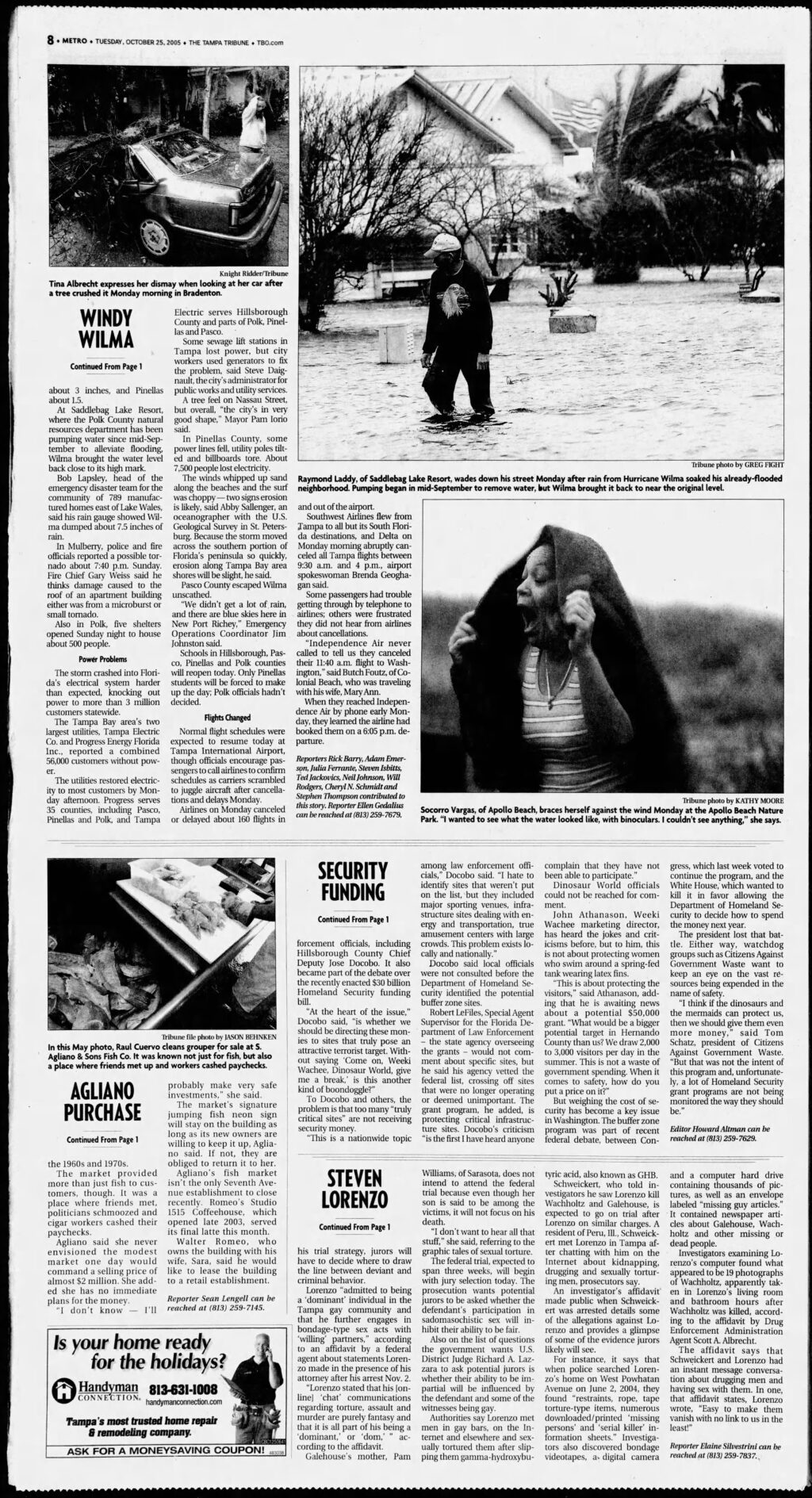Tourist Sites Might Get Security Money
The mermaids of Weeki Wachee Springs are probably not very high on the list of terrorist targets. Neither is the Styrofoam and fiberglass stegosaurus at Dinosaur World in Plant City.
Yet both facilities were on a list of sites the federal government wanted “hardened” under the $90 million Buffer Zone Protection Program, granted by the Department of Homeland Security as a way to help state and local governments secure “critical infrastructure” against attack.
Whether either tourist attraction will receive any buffer zone money is unclear. Local, state and federal officials don’t like to talk about specifics, lest they tip off the enemy. But the fact that taxpayer money is being considered rankles watchdog groups such as Citizens Against Government Waste as well as local law enforcement officials, including Hillsborough County Chief Deputy Jose Docobo. It also became part of the debate over the recently enacted $30 billion Homeland Security funding bill.
“At the heart of the issue,” Docobo said, “is whether we should be directing these monies to sites that truly pose an attractive terrorist target. Without saying ‘Come on, Weeki Wachee, Dinosaur World, give me a break,’ sis this another kind of boondoggle?”
To Docobo and others, the problem is that too many “truly critical sites” are not receiving security money.
“This is a nationwide topic among law enforcement officials,” Docobo said. “I hate to identify sites that weren’t put on the list, but they included major sporting venues, infrastructure sites dealing with energy and transportation, true amusement centers with large crowds. This problem exists locally and nationally.”
Docobo said local officials were not consulted before the Department of Homeland Security identified the potential buffer zone sites.
Robert LeFiles, Special Agent Supervisor for the Florida Department of Law Enforcement – the state agency overseeing the grants – would not comment about specific sites, but he said his agency vetted the federal list, crossing off sites that were no longer operating or deemed important. The grant program, he added, is protecting critical infrastructure sites. Docobo’s criticism “is the first I have heard anyone complain that they have not been able to participate.”
Dinosaur World officials could not be reached for comment.
John Athanason, Weeki Wachee marketing director, has heard the jokes and criticisms before, but to him, this is not about protecting women who swim around a spring-fed tank wearing latex fins.
“This is about protecting the visitors,” said Athanason, adding that he is awaiting news about a potential $50,000 grant. “What would be a bigger potential target in Hernando County than us? We draw 2,000 to 3,000 visitors per day in the summer. This is not a waste of government spending. When it comes to safety, how do you put a price on it?”
But weighing the cost of security has become a key issue in Washington. The buffer zone program was part of recent federal debate, between Congress, which last week voted to continue the program, and the White House, which wanted to kill it in favor allowing the Department of Homeland Security to decide how to spend the money next year.
The president lost that battle. Either way, watchdog groups such as Citizens Against Government Waste want to keep an eye on the vast resources being expended in the name of safety.
“I think if the dinosaurs and the mermaids can protect us, then we should given them even more money,” said Tom Schatz, president of Citizens Against Government Waste. “But that was not the intent of this program, and unfortunately, a lot of Homeland Security grant programs are not being monitored the way they should be.


